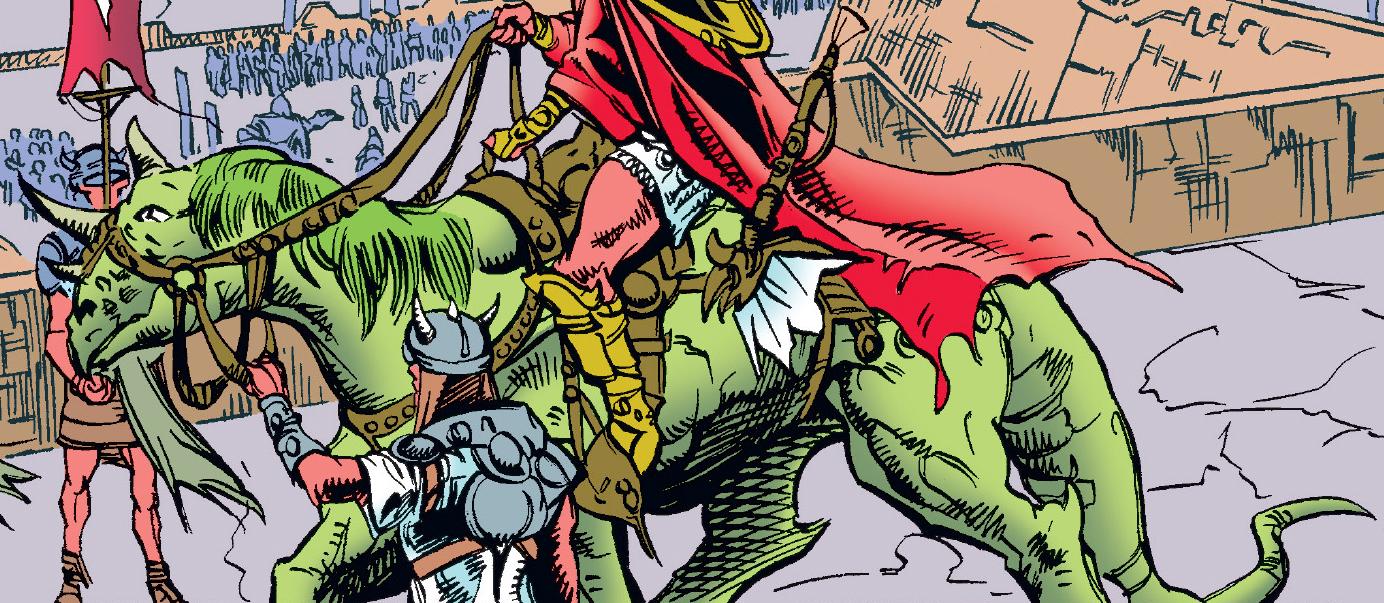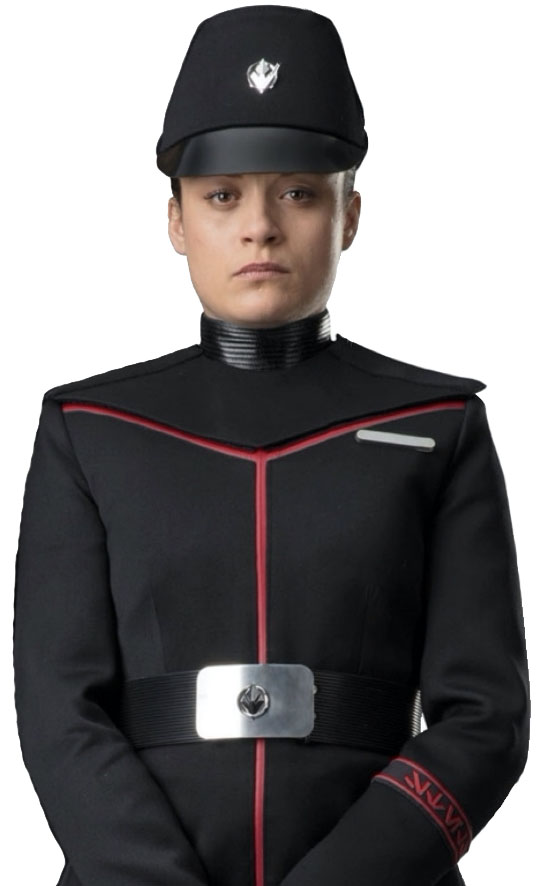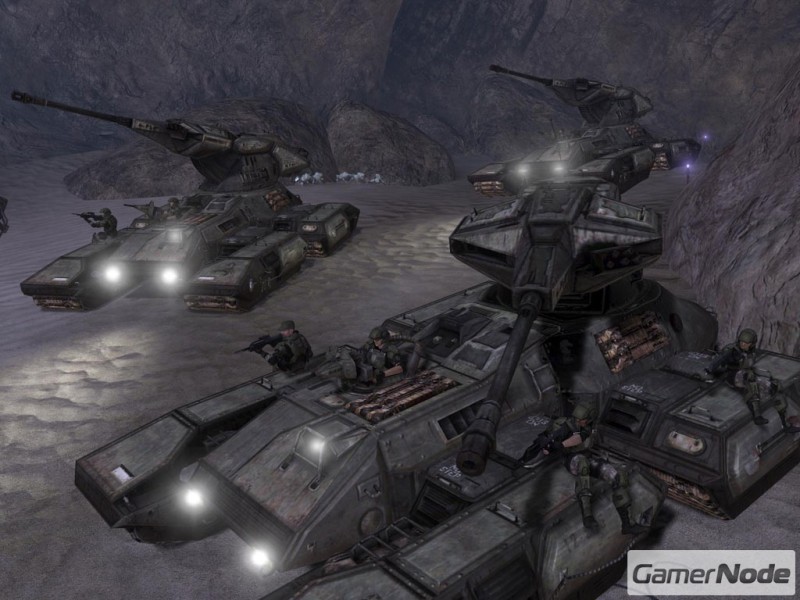Essex Large Landing Ship
The one problem that the Empire and every other spacefaring military force
in history faced was large scale planetary landings. The typical way to
accomplish such a task was to litter the sky with countless thousands of
small transports, dropships and landing barges.
Over the millenia, there were a handful of larger landing craft capable of
transporting larger amounts of troops and vehicles to the surface, however,
most were not designed for long-range space travel and required much larger
motherships to ferry them to the target system. One such larger landing ship
was Haor Chall Engineering's C-9979 landing ship, made infamous during the
Trade Federation's invasion of Naboo. The ship was massive, for its time,
measuring more than three hundred meters in width. However, the ship was
never picked up by the Old Republic due to the fleet lacking enough large
scale starships capable of transporting a landing ship of this size.
When the Empire took power, it soon became evident that many planets would
have to be pacified the hard way, with a full scale invasion. The emperor
had long been aware of the need for a larger landing ship, having taken note
of their effectiveness on Naboo. The first large scale landing ship designed
for the Empire was Evakmar's corps transport, and was perhaps one of the most
common planetary assault craft in the Imperial Navy.
However, with time comes technological development and advancement. The Empire
began looking into newer and more efficient large landing ships. While the
original Evakmar corps transports were more than adequate in serving their
intended role, they were a bit too vulnerable and could easily be blown out
of the sky before a landing could be accomplished. The next version of Evakmar's
landing ship, the SX ("Essex"), would not only transport larger sums of troops
and vehicles, but be able to engage other capital scale warships if provoked.
With an approximate forty percent increase in troop carrying capacity, fewer
ships would be needed to conduct a large scale planetary invasion. In order to
accommodate such a large amount of soldiers, the quarters were extremely small
(only 3 meters by 3 meters), each with either two, four or six bunks inside -
depending upon the rank of the soldiers inside. Nine full decks of the ship
were dedicated to housing the troops, each with massive stairwells descending
into the staging decks where the landing ramps were located.
As for the vehicles, many were stored on the staging decks while others were
stored in deep vehicle storage bays on the decks immediately above. The vehicles
in deep storage would be brought down to the staging decks as fast as possible
during a landing operation.
Not only did this new vessel sport troop and vehicle capacity, but also a pair
of hangar bays along the starboard and port sides, each concealing an assortment
of landing ships and other transports as well as two squadrons of TIE fighters
to provide both defense to the ship and air support for newly deployed ground
forces.
This, in addition to the assortment of turbolasers, ion cannons and concussion
missile launchers, the Essex was more than capable of clearing landing zones and
taking out any threat daring enough to attempt an attack.
As soon as a landing began, vehicle crews would man their vehicles and await
touchdown. Upon landing, either in a naturally clear and flat area or a recently
flattened area, dozens of massive ramps would immediately drop and begin releasing
troops and vehicles at an incredible rate.Once the staging decks had been cleared,
additional vehicles from deep storage and additional troopers, still waiting in
the corridors of the lower troop decks, would enter the staging decks and then
descend the ramps as soon as possible. Any ground resistance would come under the
fire of the carrier's heavy weaponry as well as the immense onslaught of the
disembarking forces.
In order to make a planetary landing, the Essex relied heavily upon the use of
gravity, more or less falling through the atmosphere and engaging its extensive
repulsorlift drive arrays near the end of the flight in order to make a relatively
smooth landing. However, reaching space is a great drain upon the vessel. The
repulsorlifts, in combination with the ship's ion drives, are strained to make a
slow climb back to orbit. Depending upon the gravitational pull of a planet, some
systems may have to be shutdown to divert power to either the repulsorlifts or
the ion drives.
While there were very few instances that the Essex was actually used in great
numbers, the most notable was the invasion of Krewdr Prime near the Expanse,
shortly before the Battle of Endor. Intense orbital bombardment followed by
nearly a monthlong blockade didn't seem to phase the locals, forcing Moff Firk
to order the invasion and Krewdr. Ten Essex carriers in addition to several
hundred dropships, landing barges and shuttles descended upon the helpless world.
Within two hours, nearly three million troops and vehicles had been landed and
within a week the planet was secured.
The first of the new Essex carrier-landers left the Kuat staryards shortly
prior to the events leading up to the Battle of Hoth, approximately the same
time the first Executor-class starships were commissioned. The vessels were
mass produced and deployed to priority commands as fast as they could be built.
By the Battle of Calamari, during the emperor's return, one Essex could be found
for every seven corps transports in the fleet.
Craft: Evakmar Corporation's SX "Essex"
Type: Large landing ship
Scale: Capital
Length: 1,200 meters
Skill: Capital ship piloting: Essex landing ship
Crew: 3,251; gunners: 67; skeleton: 925/+20
Crew Skill: Astrogation 4D, capital ship gunnery 4D+2, capital ship piloting
5D+1, capital ship shields 4D+1, starship gunnery 4D
Passengers: 96,144 (troops)
Consumables: 2 months
Cargo Capacity: 600,000 metric tons (unloaded), 2,000 metric tons (loaded)
Hyperdrive Multiplier: x2
Hyperdrive Backup: x18
Nav Computer: Yes
Manuverability: 1D (0D in atmosphere)
Space: 4
Atmosphere: 280; 800 kmh (landing), 225; 650 kmh (on return flight)
Hull: 4D+1
Shields: 2D+2
Sensors:
Passive: 40/1D
Search: 90/2D
Scan: 160/3D
Focus: 2/3D+2
Weapons:
5 Turbolaser Batteries
Fire Arc: 1 front, 2 left, 2 right
Crew: 2
Skill: Capital ship gunnery
Fire Control: 4D
Space Range: 3-15/35/75
Atmosphere Range: 6-30/70/150 km
Damage: 5D
16 Quad Laser Cannons
Fire Arc: 4 front, 5 left, 5 right, 2 back
Crew: 1
Scale: Starfighter
Skill: Starship gunnery
Fire Control: 4D
Space Range: 1-3/12/25
Atmosphere Range: 100-300/1.2/2.5 km
Damage: 4D
15 Ion Cannons
Fire Arc: 5 front, 5 left, 5 right
Crew: 1
Scale: Starfighter
Skill: Starship gunnery
Fire Control: 2D+2
Space Range: 1-10/25/50
Atmosphere Range: 2-20/50/100 km
Damage: 3D
5 Concussion Missile Launchers
Fire Arc: Front
Crew: 2
Skill: Capital ship gunnery
Fire Control: 2D
Space Range: 2-12/30/60
Atmosphere Range: 4-24/60/120 km
Damage: 9D
7 Tractor Beam Projectors
Fire Arc: 3 front, 2 left, 2 right
Crew: 3
Skill: Capital ship gunnery
Fire Control: 4D
Space Range: 1-5/15/30
Atmosphere Range: 2-10/30/60 km
Damage: 6D
Starship Complement:
24 starfighters, typically:
12 TIE/ln
6 TIE/ae aerospace fighters or 6 additional TIE/ln
6 TIE/gt or 6 TIE bombers
1 Lambda-class shuttle
2 Sentinel landing ships
3 stormtrooper transports
Ground/Air Complement:
25 AT-ATs, juggernaughts or floating fortresses
50 AT-STs, repulsortanks or hoverscouts
|











